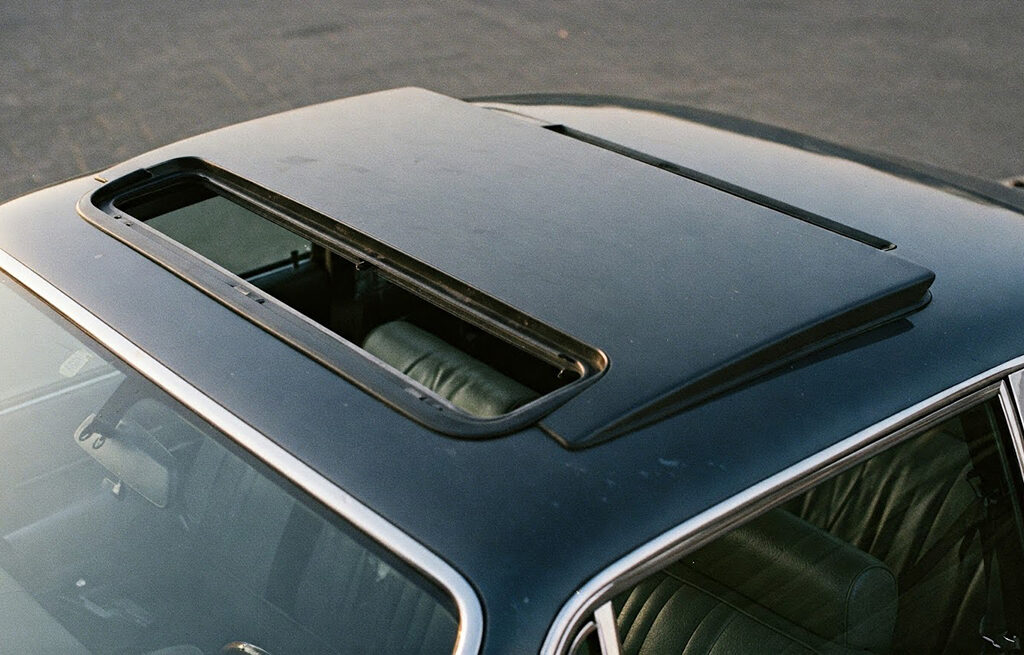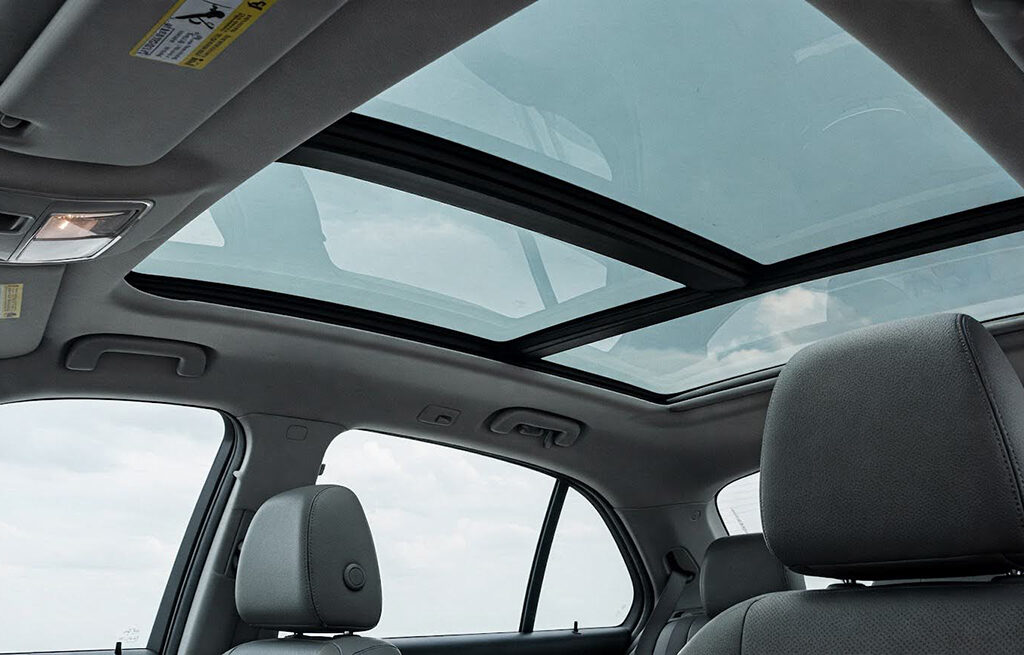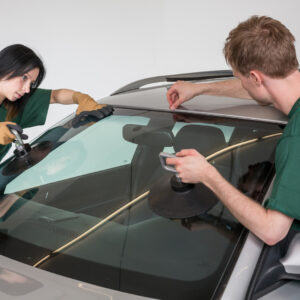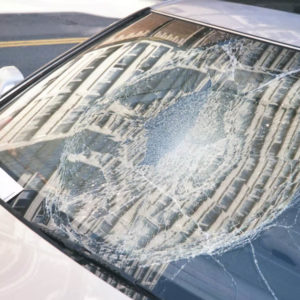It’s easy to get confused when choosing between a moonroof vs. sunroof. The terms get tossed around like they mean the same thing—and sometimes, even dealerships mix them up. But if you’re shopping for a new car or just trying to understand your vehicle’s features, knowing the difference matters. These roof options affect how much light enters the cabin, how the car looks, and even how it feels to drive.
Plus, there’s another option in the mix: the panoramic sunroof—a growing favorite in modern cars. Before jumping into comparisons or features, let’s take a moment to clear up the confusion. Whether you’re buying your first car or upgrading your ride, this guide will help you make a more informed choice.
What’s a Sunroof?

A sunroof is a panel built into the roof of a car that can open to let in fresh air and sunlight. Think of a solid panel—usually metal, sometimes glass—that either tilts up or slides back to create an open space above your head. Many older cars, especially those from before the 2000s, came with traditional sunroofs as a premium feature.
Unlike moonroofs, sunroofs tend to match the car’s body color and often feel like an extension of the metal roof when closed. Some models offer manual operation, while others include powered controls for tilting or sliding. Most sunroofs are fully retractable, allowing for more airflow than the typical moonroof.
Sunroofs add a classic touch to the driving experience. They offer a simple way to enjoy the outdoors without going full convertible. If you like feeling the wind without too much exposure, a sunroof might be the right pick.
Pros
- More airflow: Most sunroofs retract fully, giving you a more open-air feel compared to moonroofs.
- Classic style: Sunroofs offer a nostalgic, sporty vibe, especially in older models.
- Budget-friendly: In many cases, sunroofs cost less to repair or install than moonroofs.
- Simplicity: Some versions use manual controls, which means fewer electronic parts to worry about.
Cons
- Less light: When closed, a sunroof doesn’t let in natural light the way a moonroof does.
- Outdated design: You’ll mostly find them in older or entry-level vehicles; many new cars now skip them entirely.
- Potential for leaks: Older sunroofs, especially manual ones, are more prone to wear and weather-related issues. If you’re dealing with leaks or stuck panels, mobile sunroof repair services can save you time by bringing expert help directly to your location.
- Limited availability: As the industry shifts toward panoramic and glass moonroofs, traditional sunroofs are becoming less common.
What’s a Moonroof?

A moonroof is a glass panel built into the roof that usually slides or tilts open at the push of a button. Unlike traditional sunroofs, moonroofs don’t use metal panels. They’re always made of tinted glass, allowing natural light into the cabin even when closed.
Most moonroofs come with an inner sliding cover that matches the car’s headliner. You can slide it open to let light in or close it to block the sun. While the glass adds a sleek, upscale feel, it also means more heat on sunny days—though many moonroofs use UV-blocking glass to help with that.
Today, most vehicles that advertise a sunroof actually have a moonroof. Car manufacturers prefer the term because it sounds more premium. If you compare moonroof and sunroof options, this feature often feels more refined and is more common in newer models.
Pros
- More light: The tinted glass panel lets in natural light even when closed, giving the cabin a brighter, more open feel.
- Modern look: Most newer vehicles include a moonroof for its sleek, upscale appearance.
- Convenient controls: Almost all moonroofs use power operation, making them easy to open or tilt with the press of a button.
- Integrated sunshade: You can slide the inner cover to control glare or block heat, adding extra comfort.
Cons
- Less airflow: Most moonroofs don’t retract fully like traditional sunroofs, so you may not get the same breeze.
- Higher cost: Repairs and replacements for moonroofs, especially powered ones, can get expensive.
- Heat buildup: Even with tinting, the large glass panel can make the cabin warmer in sunny weather.
- More complex: The added electronics and mechanics increase the risk of malfunction over time.
Difference Between Panoramic Sunroof and Moonroof
A panoramic sunroof takes the idea of a moonroof and stretches it across most of the car’s roof. You’ll often see it covering both the front and rear seats, giving passengers a wide, open view of the sky. Most panoramic roofs use large glass panels—some fixed, some operable.
In many vehicles, the front panel tilts or slides open while the rear stays in place. This design blends the style of a moonroof with the spacious feel of a convertible without losing the protection of a solid roof. If you’re comparing the difference between a panoramic sunroof and moonroof, size and layout are the biggest factors.
Panoramic roofs make cabins feel larger and brighter, which adds to the overall driving experience. They’re especially popular in SUVs and crossovers. Just keep in mind that more glass means more heat, and repairs can cost more if something goes wrong.
Is a Panoramic Sunroof Worth It?

The answer to this depends on what you value most in a vehicle. A panoramic sunroof definitely adds a “wow” factor. It opens up the cabin, brings in natural light, and gives passengers, including those in the back, a better view. If you enjoy road trips, scenic drives, or a more airy interior, it’s a feature you’ll likely appreciate every day.
From a resale standpoint, panoramic roofs can also boost appeal. Many buyers consider it a luxury touch, and automakers often bundle it with higher trim levels.
But it’s not all upside. The large glass panels can increase cabin heat, especially in warmer climates. They may also add extra weight to the vehicle, which can slightly affect fuel efficiency. Repairs aren’t cheap either, and if the mechanism fails or leaks, fixing it won’t be fun or budget-friendly. If you spot cracks or damage, don’t wait—get expert windshield and auto glass repairs from certified technicians to avoid bigger issues.
Bottom line: If you prioritize aesthetics, comfort, and a modern feel, a panoramic sunroof is probably worth it. If you’re more concerned about cost and reliability or live in a hot climate, you might want to skip it.
How Is a Sunroof and Moonroof Different?
Moonroof and sunroof may seem like interchangeable terms, but they have key differences that matter—especially when you’re deciding which one suits your driving style. While both give you access to sunlight and fresh air, they differ in design, function, and overall feel.
Here’s a quick breakdown to help you spot the difference between a moonroof and sunroof:
| Feature | Sunroof | Moonroof |
| Material | Metal or opaque panel | Tinted glass panel |
| Transparency | Blocks light completely | Lets light in even when closed |
| Operation | Manual or power tilt/slide | Always power-operated tilt or slide |
| Interior Cover | Often doesn’t have one | Includes sliding sunshade |
| Common in | Older or basic car models | Most modern vehicles |
| Appearance from outside | Blends with car body | Visible glass panel |
Choose the Right Roof for Your Ride
Both sunroofs and moonroofs have their perks, and the right choice comes down to your personal style, comfort preferences, and how much you value light and airflow. Panoramic sunroofs raise the bar even higher, offering a luxury feel and a better view for everyone in the car.
Suppose your car’s glass roof isn’t working like it should—or if you’re dealing with a cracked sunroof—we’ve got you covered. At Auto Glass Pro, we offer expert sunroof repair and replacement in Mississauga, with mobile service that comes to you at no extra charge. We stand behind our work with a lifetime guarantee, so you can drive with confidence.
Let’s keep your car looking and feeling its best!

